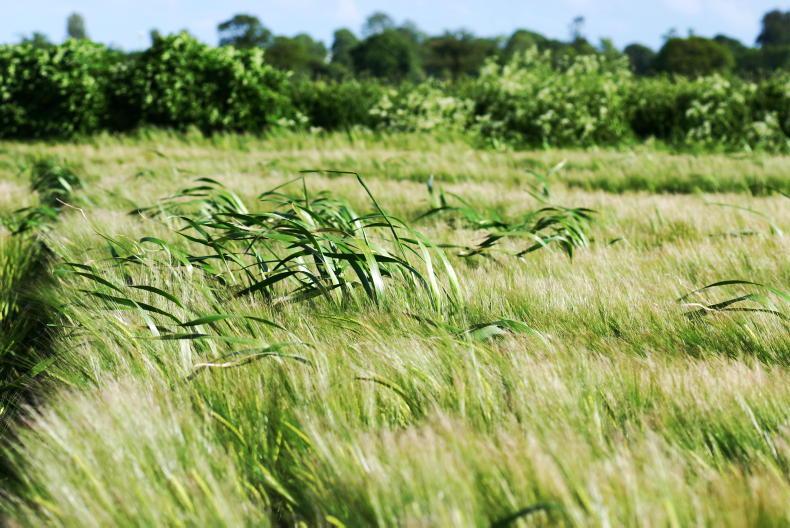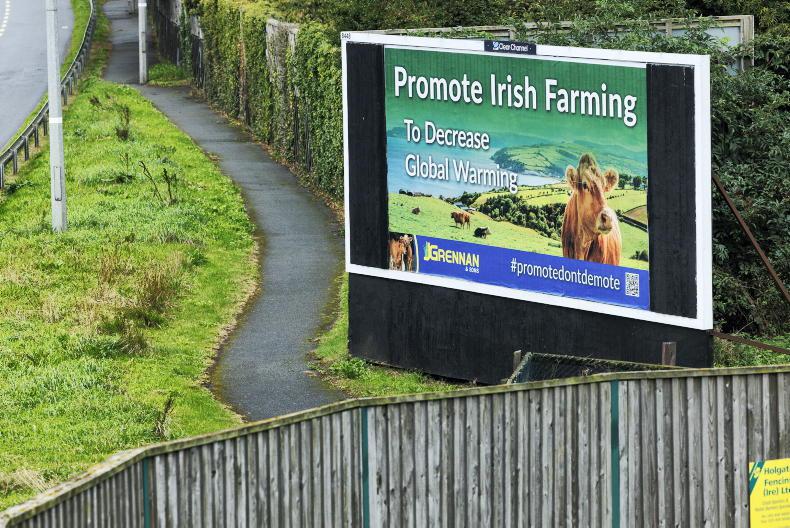What a week! I have the first week of my Global Focus Programme (GFP) completed and I am taking the opportunity to write this while flying across the Atlantic Ocean on an Airbus A380 Jumbo jet.
I left Cavan last week and the first part of our itinerary was a Battlefields Tour across the Northern Front of World War I. We travelled from Paris across to Ypres in Belgium. We were very fortunate to have an excellent tour guide on the bus to explain the history, the method and plans behind the major battles. We visited many cemeteries and monuments. The scale of the devastation is hard to comprehend; in excess of 12 million people, mostly young men, gave their lives in what must have been unbelievable devastation. To be honest it took a while to sink in. It hit me suddenly one day in a really lovely peaceful cemetery, in a beautiful part of France. People, so many people, young people.
After two days touring the Battlefields, we were off to the UK. There are nine scholars in my GFP group, and we will be together for the next seven weeks as we travel around the globe.
At this stage, you might be wondering what all this is about. The motivation is to get a global perspective on how farming, agriculture and trade works. There are five Australians, one New Zealander, one UK scholar and one scholar from Holland.
They understand now it’s not just money to prop up farming, but it is a way to keep rural Europe alive
At first, my southern hemisphere friends were really angry about how European farmers just farm for the cheque in the post from Brussels. But after the CSC week in Cavan and the history of the Battlefields, they had a better understanding of the history and the reasons behind the CAP payments. They understand now it’s not just money to prop up farming, but it is a way to keep rural Europe alive, vibrant, clean and green or a patchwork of different colours.
So we picked up our hire minibus and headed in the direction of Bristol to Lyle Cross Farm, which is a integrated business of dairy farming and cheese-making. The whey goes to pigs or to an anaerobic digester. Then the slurry or digestate goes to the fields to grow crops or grass to feed the cows. It was a fantastic model and it has scale, making about 4,500t of cheese annually and also collecting milk from 33 suppliers. Despite the fact that there is no waste, they are under serious pressure from the retail sector and are struggling to pay a price for milk that the farmers are happy with.
The next day we were off to see another big farming enterprise. The Raymond family farm originally started as two brothers and was then passed down to two cousins. It includes two herds of almost 300 milking cows, along with a sizeable potato operation. We got to see the de-stoning and planting operation in full swing and the Australian arable farmers in the group were most impressed.
Developing Abergain Abermagic
That evening, we travelled on to The Bug Farm and we had a talk by Dr Sarah Beynon on the importance of the dung beetle, how it breaks down the nutrients from fresh manure and places it under the soil for plants to take it up. She explained how there is a very real problem with ivomectins killing off the bug life and the challenge for farmers to protect them and, in turn, protect and feed the soil. It was a very interesting meeting and she was passionate about the subject. We had a light lunch in the Bug Café and, to be honest, it was lovely. We had mealworms and a variety of other worms on the menu, which are an excellent form of protein.
Day three saw us moving further along the coast of Wales to the University of Aberystwyth. Anyone with an interest in grass seed should know about this place. We got to meet the researchers who developed Abergain Abermagic and other varieties. We got an interesting tour around the labs and some amazing glasshouses with all sorts of conveyer belts and technology to weigh and monitor and scan each plant individually. Each plant was grown in a pot and identified with RFID tags. Growth and density of leaves could be measured precisely without interfering with the plants.
Big business in shooting
Day four started with a long drive across to the east coast of England, near Norfolk, where we got a fantastic tour of British Sugar. There are 50 acres under glass, where tasty tomatoes are grown; I know because I helped myself to a few. Excess heat and carbon dioxide are taken from the sugar factory to help grow the tomatoes. We also had a tour around the fen area, which is one metre below sea level. The soil here is black – really black. It’s probably the best soil I have ever seen, and can grow fantastic crops of beet.
On day five, we had a tour of Stow Farm Estate, where we met with gamekeeper Nigel. He told us how he organises game-shooting on the estate and how they have a big programme of conservation and enrichment of the estate land and woodlands. It is big business with people paying up to £500 for a day of shooting. It was fascinating to hear his tales. His main message was about having “respect for the game”.
All in all, it was a fantastic week in the UK. We were very lucky to have past Nuffield scholar Jamie McCoy with us to show us around the country and to make sure we did not get lost.
You can follow our progress on Twitter using the hashtag #nuffield16.
Read more
Full coverage: Nuffield contemporary scholar conference 2016
A farmer writes: opening my mind to new opportunities
What a week! I have the first week of my Global Focus Programme (GFP) completed and I am taking the opportunity to write this while flying across the Atlantic Ocean on an Airbus A380 Jumbo jet.
I left Cavan last week and the first part of our itinerary was a Battlefields Tour across the Northern Front of World War I. We travelled from Paris across to Ypres in Belgium. We were very fortunate to have an excellent tour guide on the bus to explain the history, the method and plans behind the major battles. We visited many cemeteries and monuments. The scale of the devastation is hard to comprehend; in excess of 12 million people, mostly young men, gave their lives in what must have been unbelievable devastation. To be honest it took a while to sink in. It hit me suddenly one day in a really lovely peaceful cemetery, in a beautiful part of France. People, so many people, young people.
After two days touring the Battlefields, we were off to the UK. There are nine scholars in my GFP group, and we will be together for the next seven weeks as we travel around the globe.
At this stage, you might be wondering what all this is about. The motivation is to get a global perspective on how farming, agriculture and trade works. There are five Australians, one New Zealander, one UK scholar and one scholar from Holland.
They understand now it’s not just money to prop up farming, but it is a way to keep rural Europe alive
At first, my southern hemisphere friends were really angry about how European farmers just farm for the cheque in the post from Brussels. But after the CSC week in Cavan and the history of the Battlefields, they had a better understanding of the history and the reasons behind the CAP payments. They understand now it’s not just money to prop up farming, but it is a way to keep rural Europe alive, vibrant, clean and green or a patchwork of different colours.
So we picked up our hire minibus and headed in the direction of Bristol to Lyle Cross Farm, which is a integrated business of dairy farming and cheese-making. The whey goes to pigs or to an anaerobic digester. Then the slurry or digestate goes to the fields to grow crops or grass to feed the cows. It was a fantastic model and it has scale, making about 4,500t of cheese annually and also collecting milk from 33 suppliers. Despite the fact that there is no waste, they are under serious pressure from the retail sector and are struggling to pay a price for milk that the farmers are happy with.
The next day we were off to see another big farming enterprise. The Raymond family farm originally started as two brothers and was then passed down to two cousins. It includes two herds of almost 300 milking cows, along with a sizeable potato operation. We got to see the de-stoning and planting operation in full swing and the Australian arable farmers in the group were most impressed.
Developing Abergain Abermagic
That evening, we travelled on to The Bug Farm and we had a talk by Dr Sarah Beynon on the importance of the dung beetle, how it breaks down the nutrients from fresh manure and places it under the soil for plants to take it up. She explained how there is a very real problem with ivomectins killing off the bug life and the challenge for farmers to protect them and, in turn, protect and feed the soil. It was a very interesting meeting and she was passionate about the subject. We had a light lunch in the Bug Café and, to be honest, it was lovely. We had mealworms and a variety of other worms on the menu, which are an excellent form of protein.
Day three saw us moving further along the coast of Wales to the University of Aberystwyth. Anyone with an interest in grass seed should know about this place. We got to meet the researchers who developed Abergain Abermagic and other varieties. We got an interesting tour around the labs and some amazing glasshouses with all sorts of conveyer belts and technology to weigh and monitor and scan each plant individually. Each plant was grown in a pot and identified with RFID tags. Growth and density of leaves could be measured precisely without interfering with the plants.
Big business in shooting
Day four started with a long drive across to the east coast of England, near Norfolk, where we got a fantastic tour of British Sugar. There are 50 acres under glass, where tasty tomatoes are grown; I know because I helped myself to a few. Excess heat and carbon dioxide are taken from the sugar factory to help grow the tomatoes. We also had a tour around the fen area, which is one metre below sea level. The soil here is black – really black. It’s probably the best soil I have ever seen, and can grow fantastic crops of beet.
On day five, we had a tour of Stow Farm Estate, where we met with gamekeeper Nigel. He told us how he organises game-shooting on the estate and how they have a big programme of conservation and enrichment of the estate land and woodlands. It is big business with people paying up to £500 for a day of shooting. It was fascinating to hear his tales. His main message was about having “respect for the game”.
All in all, it was a fantastic week in the UK. We were very lucky to have past Nuffield scholar Jamie McCoy with us to show us around the country and to make sure we did not get lost.
You can follow our progress on Twitter using the hashtag #nuffield16.
Read more
Full coverage: Nuffield contemporary scholar conference 2016
A farmer writes: opening my mind to new opportunities

















SHARING OPTIONS